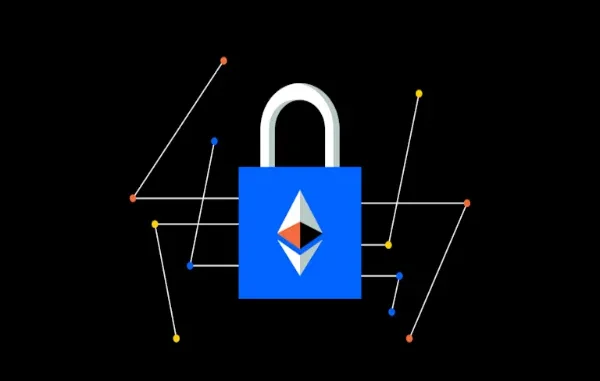
Vampire attacks are a growing phenomenon in the decentralized finance (DeFi) sector. They’re reshaping the competitive landscape of blockchain technology, whether it’s through indirectly influencing a Bitcoin price change or tanking an existing crypto exchange platform. These attacks occur when a new platform aggressively targets an established protocol by enticing its users and liquidity providers with better incentives.
As the DeFi ecosystem expands, so does the prevalence of these tactics, posing challenges for projects striving to maintain user loyalty. While vampire attacks can spark innovation and competition, they also highlight vulnerabilities within the crypto space. Understanding these strategies is crucial for users and platforms alike to find success in this rapidly evolving market and safeguard their investments.
How Do Vampire Attacks Work?
Vampire attacks in the DeFi ecosystem involve one platform siphoning users and liquidity from another. This is typically achieved by offering more attractive rewards, such as higher yields, lower transaction fees, or exclusive token incentives, to draw users away from a competing protocol. The term “vampire” stems from the parasitic nature of the tactic, as it “drains” resources from the targeted platform.
For example, a platform may target a competitor’s liquidity pools, encouraging users to migrate funds in exchange for lucrative returns. Such strategies can disrupt market dynamics, forcing established protocols to respond with better offers or enhanced services.
Even prominent platforms can experience the ripple effects of vampire attacks. These actions intensify competition and highlight the importance of robust user retention strategies and sustainable business models in an ever-competitive DeFi environment.
Why Do Vampire Attacks Happen?
Vampire attacks occur primarily due to the competitive nature of the decentralized finance (DeFi) sector. Emerging projects often use these strategies to quickly gain market share and attract liquidity, which is a critical factor for the success of any DeFi platform. By offering higher rewards, lower fees, or exclusive benefits, new platforms can entice users to switch from established protocols, accelerating their growth.
Tokenomics often plays a pivotal role in enabling vampire attacks. Projects distribute their native tokens as rewards, creating immediate value for users. This strategy allows newer platforms to compete with well-established players, leveling the playing field despite limited resources.
Also, vampire attacks highlight the lack of user loyalty in many cases, as investors often prioritize returns over long-term relationships with platforms. While these attacks are aggressive, they can also drive innovation, compelling existing platforms to enhance their offerings to retain users and liquidity.
How Do Vampire Attacks Affect Crypto Platforms?
Vampire attacks can have both disruptive and transformative effects on the crypto ecosystem. For targeted platforms, these attacks can lead to significant losses in liquidity, eroding trust among users, and potentially destabilizing the protocol. Such challenges often force established players to respond with counter-incentives, which can strain resources and impact long-term sustainability.
On the flip side, competition driven by vampire attacks often fosters innovation. Platforms may improve user experience, offer more attractive features, or develop stronger community engagement strategies. This dynamic can ultimately benefit the broader DeFi sector by raising the standard for services and user incentives.
However, these attacks also introduce risks for users. Rapidly shifting liquidity can increase market volatility, while unsustainable incentives from newer platforms may collapse over time. To manage this instability, users must carefully evaluate the risks and rewards of switching platforms and remain cautious about short-term gains over stability.
How Can Users and Platforms Protect Themselves From Vampire Attacks?
Both users and platforms can take proactive steps to mitigate the risks associated with vampire attacks. Users should prioritize thorough research before migrating funds to new platforms. Evaluating the sustainability of reward structures, security protocols, and long-term viability is crucial to avoid potential losses. Diversifying investments across multiple platforms can also reduce exposure to risks associated with liquidity shifts.
On the other hand, platforms must focus on fostering user loyalty and strengthening their value proposition. Transparent communication, enhanced user experiences, and competitive incentives can help retain existing users. Implementing innovative tokenomics, such as staking rewards or tiered benefits for long-term users, can discourage liquidity migration.
Community engagement is another powerful tool. Platforms with strong, active communities are less susceptible to vampire attacks, as users are likelier to stay committed. Platforms can protect themselves in the highly competitive DeFi landscape by building trust and delivering consistent value.
The Future of Vampire Attacks in DeFi
As the DeFi ecosystem evolves, vampire attacks will likely become more sophisticated. Emerging platforms may develop new strategies to attract users, leveraging advanced tokenomics or unique features. While this could intensify competition, it may also drive innovation, compelling protocols to enhance their services.
Users and platforms can thrive by staying informed, evaluating opportunities carefully, and prioritizing sustainable practices. With vigilance and adaptability, the challenges posed by vampire attacks can lead to lasting growth and resilience.

Leave a Reply